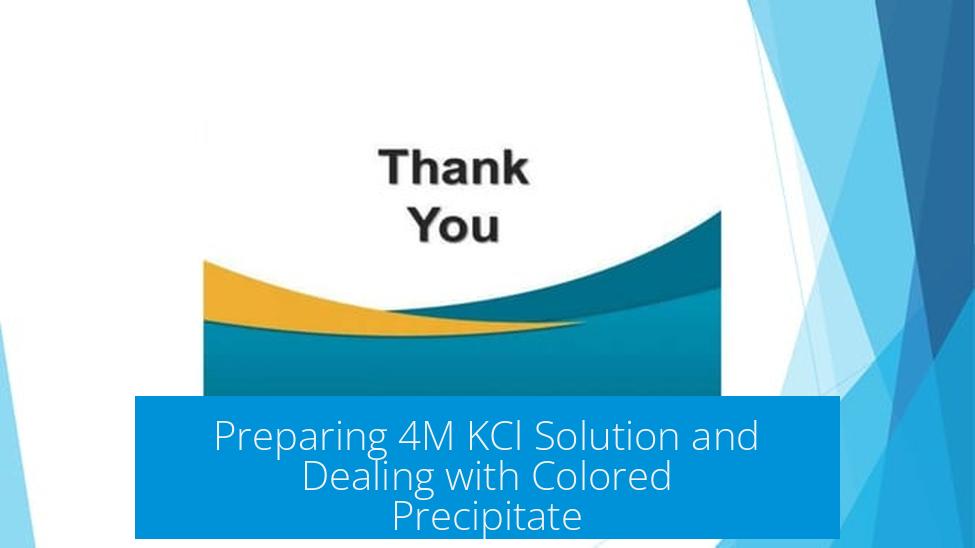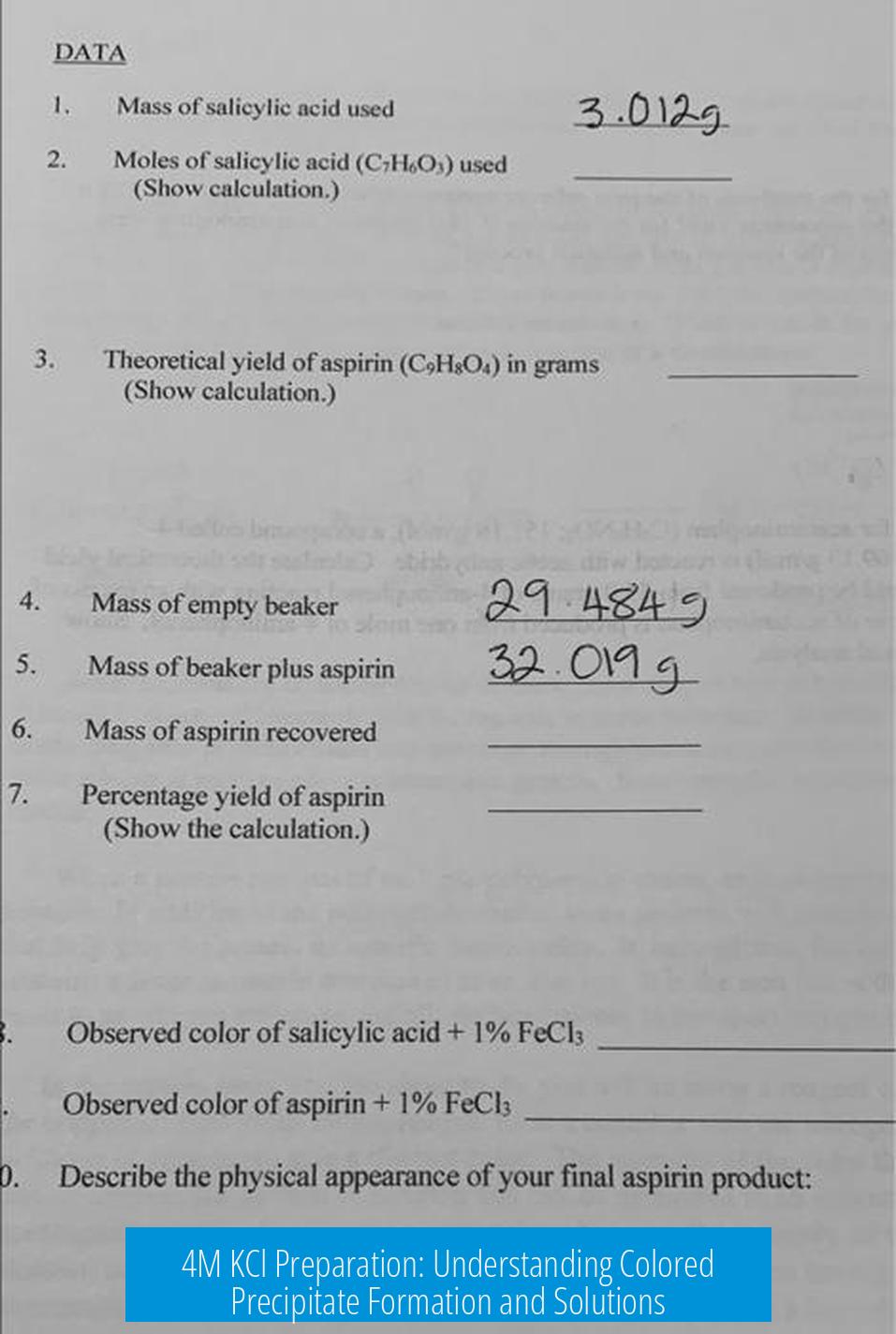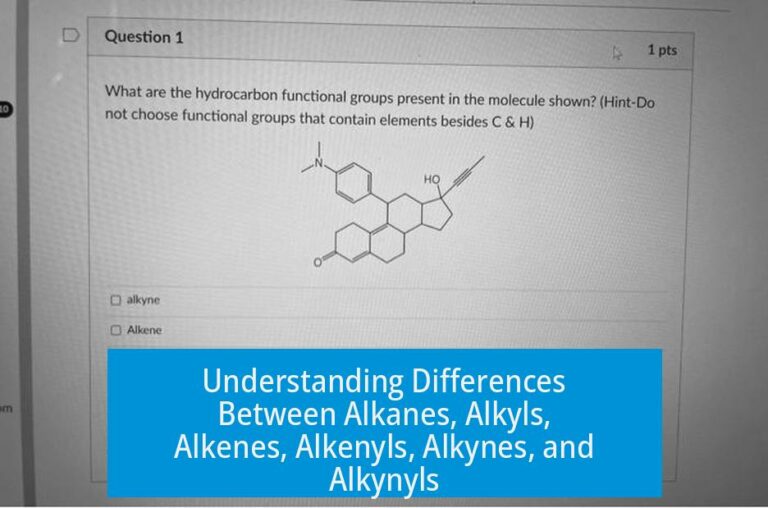Preparing 4M KCl Solution and Dealing with Colored Precipitate

Preparing a 4M KCl solution often results in colored precipitate due to saturation near its solubility limit, potentially compounded by impurities in water or the reagent. This issue arises because 4M is close to the maximum solubility of potassium chloride in water at room temperature. When the solubility threshold is crossed, excess KCl crystallizes out of solution, sometimes visible as a precipitate.
Solubility and Precipitation in 4M KCl

- At room temperature, KCl’s solubility limit is near 4M. Preparing beyond this concentration tends to produce undissolved crystals or precipitate.
- Heating and stirring the solution can often redissolve the precipitate, indicating it is likely just saturated KCl rather than a contaminant.
- Filtering after precipitation causes loss of dissolved salt, reducing the effective molarity.
- Commercial suppliers typically provide stock KCl solutions up to 3M, reflecting practical concentration limits.
Colored Precipitate: Possible Causes
- Pure KCl should not produce colored precipitate. When colors appear, contamination is probable.
- Water quality is a critical factor. Using deionized or double-distilled water minimizes impurities like iron or other metals.
- Tap water or low-grade reagents may introduce metallic ions that form insoluble colored chlorides, resulting in the observed precipitate.
- Checking water by conductivity or total dissolved solids (TDS) helps confirm purity.
Practical Advice for 4M KCl Preparation
- Using a 3M KCl solution is simpler and less prone to precipitation-related issues.
- Evaluate the actual need for 4M KCl, especially in applications like pH electrode storage where 3M may suffice.
- If colored precipitate appears, assess the reagent grade and water quality before preparing again.
- The solution may still be usable for electrode storage despite minor precipitate, but its exact concentration may vary.
Summary of Key Points
- 4M KCl approaches saturation and may precipitate if not thoroughly heated and mixed.
- Colored precipitate generally indicates contamination, often from impure water.
- Using high-grade reagent and ultrapure water is essential for clear solutions.
- 3M KCl stock solutions are more practical and commonly used in laboratories.
- Consider solution usability based on application needs and accept some precipitate when storing pH electrodes.
Why does a colored precipitate appear when preparing 4M KCl?
Colored precipitate often results from impurities in the water, like metallic ions. Tap water may contain iron or other metals that form insoluble chlorides, causing the color. Pure KCl itself does not produce colored precipitates.
Can heating the solution redissolve the precipitate?
Yes. Heating and stirring the solution can help redissolve KCl crystals if precipitation occurs near saturation. This can restore a clear solution without losing solute.
Is 4M KCl a practical concentration to prepare?
4M KCl is near the solubility limit, making it hard to maintain saturation without precipitation. Many suppliers stock 3M solutions, which are easier to prepare and stable.
Could the precipitate mean my KCl reagent is contaminated?
Contamination is possible but rare. More often, the precipitate comes from water quality issues. Use high-grade reagents and deionized water to reduce this risk.
Is a solution with precipitate still usable for pH electrodes?
Typically, yes. Even with some precipitate, 4M or 3M KCl can serve well as a reference solution for pH electrodes, but clearer solutions improve reliability.





Leave a Comment